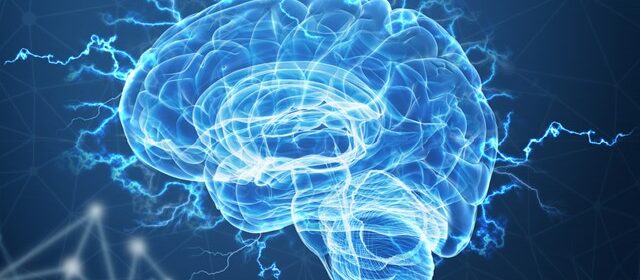Our Sense of Reality: How our brain physiology influences online interactions

We have an innate tendency to trust what we hear and see.
However, our senses are not infallible.
COURTENEY MALIN – The early survival of our species depended on our visual clarity and hearing to access food (and to avoid becoming food). The accuracy and reliability of our sensory system is ingrained in our neurophysiology. If we did not trust our senses, we would be engulfed in eternal uncertainty. We would perceive sensory information but would constantly question our realities.
Every millisecond, our brains use incoming sensory information to interpret our environments into a conscious and personalized representation of what is actually there. We are not perceiving every aspect of our environments, only what our built-in systems allow us to perceive. This is why optical illusions can trick us to see movement where there is none or change how we classify colors (recall the blue/black or white/gold dress debate of 2015). Our conscious perception also requires attention. While our brains constantly interpret sensory information from our environments, we only notice when our attention is drawn to something of significance.
We know that our biological interpretations of our surroundings are different from each other. In extreme cases, some people are missing sensory information (i.e. no color vision), so their perception diverges from the conventional perception. Yet the less extreme cases cause greater differences in our realities.
Not only do our brains use ‘objective’ sensory information, but they also involve our past experiences in our current perceptions. In psychology, this phenomenon is referred to as top-down perception (or processing). There are hundreds (probably thousands) of research articles, detailing how our personal histories can affect our perception of the environment. For example, if you are expecting to drink hot chocolate, but you are given green tea, then you might automatically spit out the green tea even though you like both hot chocolate and green tea. The past experience of the sweetness of hot chocolate was influencing your reaction and perception of the drink.
Our perceptions online are rather limited.
Online, our sensory information is restricted. At most, we have two senses: sight and hearing. We cannot further confirm an online experience via touch, taste, or smell.
Previously, I mentioned ‘less extreme cases.’ These are influenced by our individual histories and experiences. Two people have different realities simply because their life stories are not the same. When we have to rely on fewer senses, our brains incorporate the past information from only those senses. We believe videos and images are real unless there are obvious inconsistencies that reveal that they have been edited. Maybe a door frame is curved or the mouth movements and the sound in a video are inconsistent. When everyone can differentiate between real and fake, our realities remain harmonious.
The issue lies with advancing technology. We see the new Star Wars movie and Carrie Fisher edited into a few frames almost seamlessly. Of course, we know this is fictional, but what happens when all of our sensory information is telling us an image or a video is real? What if we do not have past experiences that allow us to differentiate between real and fake when the sensory information is online? What if our past experiences cause us to be more willing to believe that something is real? Then, our realities begin to clash.
In 2018, reporter Rana Ayyub was the victim of a deepfake video (her face was inserted into a porn video). The video creator attempted to humiliate her and muzzle her criticisms of the Indian government. This video spread across India, resulting in death and rape threats against Ayyub. Rana Ayyub knew the video was not real, but after a few days, the video had spread to half of India’s cell phones. Nothing about the video indicated that it was fabricated to the general public.
Our biological equipment pushes us to believe what we see and hear. Our experiences differentiate between whether we believe what we see and hear online or whether we question it. Ayyub knew it was not her in the video despite seeing the same video as those who believed it was her. She knew it was fake but trying to convince others when all their sensory information told them otherwise was an arduous task.
The same issue arises with conspiracy theory images and videos. Some people are more likely to believe that images and videos that support a conspiracy theory are real because of their past beliefs. This tendency to believe in evidence that supports prior, existing beliefs is known as confirmation bias. When both sensory information and past beliefs are impacting perception, our realities become more distinct from each other.
Online interactions amplify our differences in perception. Seventy years ago, all images were real. Our visual information was reliable. Forty years ago, professional films could be altered, but the differences in quality between the unedited frames and edited frames indicated which were real or fake (if you have seen RoboCop, you know what I mean). Today, images can be edited on our phones and realistic video editing is becoming more prevalent. The fake videos and images can then be spread in an instant online. The physiological mechanisms that allow us to interact with our environments are now causing our perceptions to diverge so much that we live in opposite realities. These differences are alarming. How we perceive our surroundings affects policy, our relationships, how we interact with new people, what food we choose, where we live—almost every aspect of our lives.
As individuals, we must learn how to be smart skeptics online. We need to demand evidence beyond our senses to confirm whether a video or image is true, but we must not become overly skeptical when there is sufficient evidence to support a truth. Only then will our realities begin to unite again.
Copy Editor: Stephen Joseph
Photography Source: Shweta Mistry
